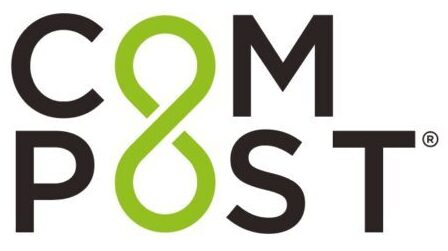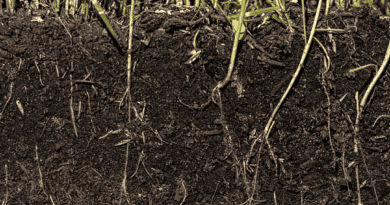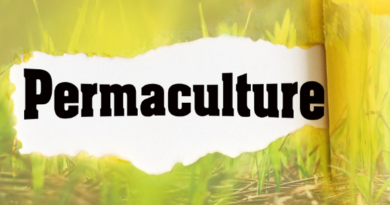10 Things You Should Know About The Soil Food Web
The Soil Food Web is a community of microorganisms living all or part of their lives in our soils. These organisms spend all their lives quietly decomposing organic compounds such as plant residue, manures and even pesticides preventing them from entering water and becoming pollutants. These organisms sequester nitrogen and other nutrients that might otherwise enter groundwater, and they fix nitrogen from the atmosphere, making it available to plants. Many organisms enhance soil aggregation and porosity, thus increasing infiltration and reducing runoff. Soil organisms prey on crop pests and are food for above-ground animals. The organisms are a formidable team you want to ensure are present and happy. Here are 10 things you should know about the Soil Food Web.
1) Plants Control The Food Web
Plants are at the centre of any viable food web. Plants control the food web for their benefit. Some studies have shown that individual plants can control the numbers and kinds of fungi and bacteria attracted to the rhizosphere by the exudates (fluids) they produce. Soil bacteria and fungi are like small fertilizer bags that carry nitrogen and other nutrients. Soil protozoa and nematodes act as fertilizer spreaders in that they release the fertilizer stored inside the bags carried or locked up by the bacteria and fungi. These protozoa and nematodes eat bacteria and fungi and excrete carbon and other nutrients. So plants produce exudates (fluids) that attract fungi and bacteria, that in turn attract fungi and bacteria. In this interplay, the plants get the nutrients that they need.
2) Soil life creates soil structure
The protozoa and nematodes that feasted on fungi and bacteria are in turn eaten by arthropods. Soil arthropods include insects and spiders. They are then eaten by snakes, birds, moles and other animals. Worms, insect larvae and moles move around through the soil in search of food and protection from prey. The pathways they create as they move around create allow air and water to enter and leave the soil. This process creates a healthy soil structure.
3) Soil life produces soil nutrients
When a member of the soil food web dies, it becomes fodder for other members of the community. In this process, fungi and bacteria are involved in either decaying the organism or working on the excretion of the predator. Nutrients are preserved either way and stored in the rhizosphere. The nutrients are then released in a plant-available form where they are consumed. In the absence of this system, important nutrients would drain from the soil.
4) Healthy Soil Food Webs Control Disease
Not all soil organisms are beneficial as such a healthy food web is one that is not damaged by disease-causing and pathogenic organisms. Pathogenic fungi and soil bacteria cause many plant diseases. A healthy soil food web contains tremendous numbers of organisms in individual and diverse forms. These large and diverse communities tame the troublemakers and control disease.
5) Chemical Fertilizers, Pesticides, Insecticides and Fungicides Negatively Impact the Soil Food Web
Chemically fed plants bypass the microbial-assisted method of obtaining nutrients. The microbes adjust accordingly and the more you add the chemicals the bacteria, fungi, nematodes and protozoa reduce in numbers until they eventually disappear. Other community members such as earthworms vacate too.
With microorganisms absent from the soil, watering becomes problematic, pathogens and pests establish themselves and the soil structure gets destroyed.
6) Not all Nitrogens Are equal
From a plants’ perspective, the role of the soil food web is to cycle nutrients. The nutrients become temporarily immobilized in the bodies of fungi and bacteria where they then become mineralized. Nitrogen is the most important of these nutrients as it is the basic block of amino acids. Nitrogen comes from the atmosphere, 78% of which is in gaseous form. The amount of nitrogen that is available for use by plants is normally determined by the total amount of fungi and bacteria in the soil.
In a study done by Dr Elaine Ingham, Founder of the Soil Food Web it was established that the least disturbed soils (no-till soils) had more fungi than bacteria while tilled soils or disturbed soils had more bacteria than fungi. This study further determined that perennials, trees and shrubs preferred fungally dominated soils while vegetables, grasses and annuals prefer soils dominated by bacteria. What does this mean? Remember nitrogen is the most important nutrient for plants. When the plant available ammonium is made available for plants, it either remains as ammonium or is converted into nitrate by special bacteria. This conversion depends on the soil environment and ammonium is released in soils dominated by bacteria. In fungally dominated soils, most of the nitrogen remains in the ammonium form. When plants are fed with chemical fertilizers the nitrogen provided to plants is in the form of nitrates.
7) Microorganisms Are Local
Just as climates, soils and plant populations are different, microorganisms are different too. Microbial species are unique to the local soil and area. The soil biology in your garden or farm is unique to your area. What this means for a farmer or a gardener is you need to grow and promote plants that are native to your area as that, in turn, promotes microorganisms that are inherent to your area. Microorganisms are a major workforce working tirelessly to provide nutrients, protection and support to your plants.
8) Balance is Key
Just like human beings who need to feed on a balanced diet to build healthy bodies, the soil needs a balanced diet. As mentioned before, using synthetic chemicals harms soil biology. The salts and other components are detrimental to the microorganisms. Herbicides, for example, can kill fungi in the soil thus leading to higher amounts of bacteria. The irony is that weeds thrive in an environment with a high ratio of bacteria. Even if you do not use synthetic chemicals, healthy soil meets the needs of your plants, gives them vigorous growth and fights diseases.
The microorganisms, nutrients and micronutrients have intricate roles to play in the soil similar to the organs in our bodies
9) Microbial Activity is Seasonal
The activity of soil organisms follows both daily and seasonal patterns. Some species are more active during cold temperatures and seasons while others are more active during the hot/moderate temperatures and seasons. The interaction with the soil, one another and plants combined produces several beneficial functions including nutrient cycling, moderated water flow, and pest control.
10) Tilling Destabilizes The Soil Food Web
Turning your garden soil through tilling disrupts microbial populations by changing their depth in the soil. It is recommended to add compost to the soil and let the food web organisms do the job. IF you are working on a completely new garden, then you can till it once as you prepare for planting. For subsequent plantings, you can then work with hand tools for planting and weeding.
Conclusion
As you continue to appreciate the value and benefits of the soil food web, it is advisable to continuously study and intimately understand how your soil works by observing the plant life. Annual soil tests are advisable as that way you stay abreast with the soil biology and enable you to make the right decisions for your soil. Remember that some plants prefer soils dominated by fungi and others prefer soils dominated by bacteria. Most vegetables and grasses like their nitrogen in the nitrate form and thrive in bacterial dominated soils.
Compost can be used to inoculate beneficial microbes and life into the soil in your garden. It can also be used to introduce, maintain and adjust the soil food web.
The soil food web is a complex system, to learn more we recommend the readings below.
References
Dr Elaine’s™ Soil Food Web Approach
https://www.soilfoodweb.com/
Soil Biology and the landscape
https://www.nrcs.usda.gov/wps/portal/nrcs/detailfull/soils/health/biology/?cid=nrcs142p2_053868
Building Soil, Murphy Elizabeth (Cool Springs Press, 2015)
Teaming With Microbes, Lowenfels and Lewis (Timber Press, 2010)
The Soil Food Web: Nature’s Way to Build Healthy Soils
https://piedmontmastergardeners.org/article/the-soil-food-web-natures-way-to-build-healthy-soils/




